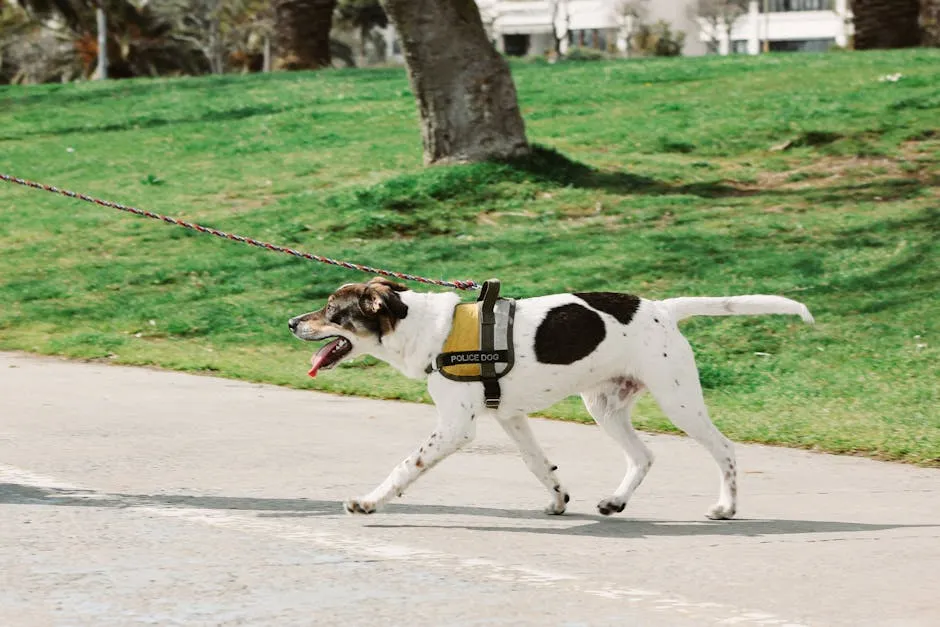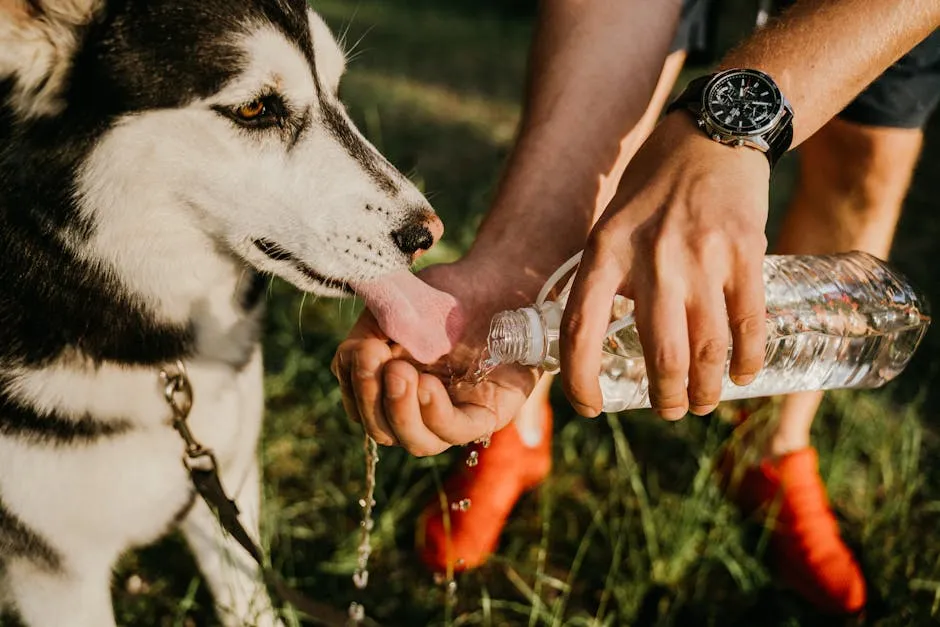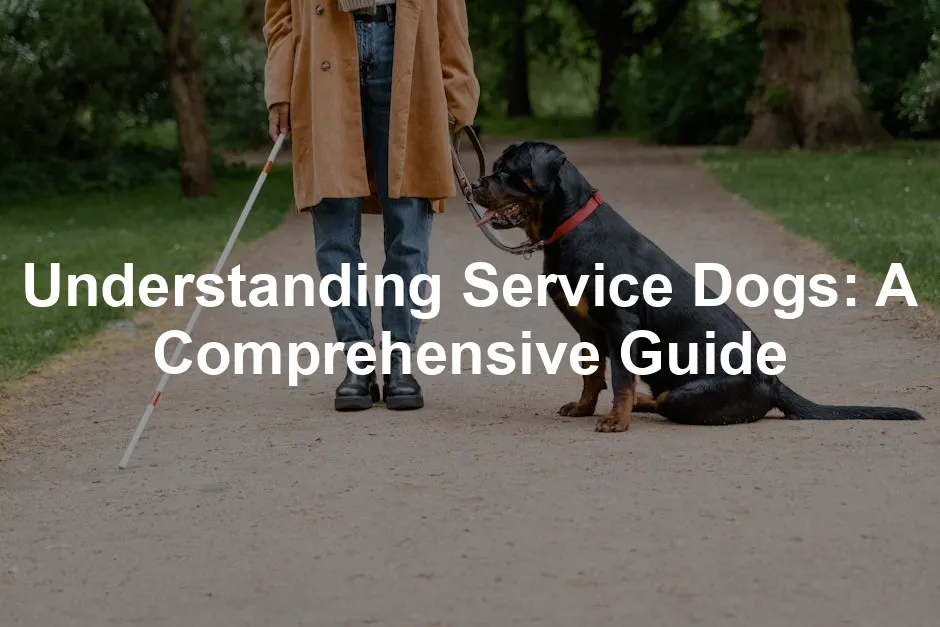Introduction
Service dogs play an essential role in helping people with disabilities. They provide critical assistance, improving independence and quality of life. As awareness grows, understanding service dogs becomes increasingly important in our society.
To equip your service dog for success, consider investing in a Service Dog Vest Harness. Not only does it signify their role, but it also ensures they are comfortable and secure during your outings.
Summary and Overview
A service dog is defined by the Americans with Disabilities Act (ADA) as a dog trained to perform tasks for a person with a disability. These dogs help individuals manage daily activities and enhance their overall well-being.
It’s crucial to differentiate service dogs from emotional support animals (ESAs) and therapy dogs. While service dogs are task-trained, ESAs provide comfort but lack specific training. Therapy dogs visit facilities to offer comfort to others but are not recognized under the ADA.
Service dogs perform a variety of tasks, such as guiding individuals with visual impairments, alerting those who are deaf, assisting with mobility, and detecting medical conditions like seizures and anxiety. They can support people with physical, sensory, and psychiatric disabilities.

What is a Service Dog?
According to the ADA, a service dog is a trained canine that assists individuals with disabilities by performing specific tasks. Key traits of service dogs include their ability to remain calm in public and their strong bond with their handlers.
These dogs undergo extensive training to ensure they can effectively perform their tasks. This training is vital for their success and the safety of their handlers. The level of training required varies depending on the tasks they need to perform.
If you’re looking for ways to train your service dog, consider reading a comprehensive Dog Training Book. It can provide valuable insights and techniques to help you succeed.
Types of Service Dogs
Service dogs come in various types, each designed to assist individuals with specific needs. Let’s take a closer look at these dedicated companions.
Guide Dogs
Guide dogs help visually impaired individuals navigate their surroundings. They guide their partners safely around obstacles, manage traffic, and provide independence. Imagine walking through a busy street with complete confidence, thanks to a loyal guide dog by your side.

Hearing Dogs
Hearing dogs alert deaf or hard-of-hearing individuals to important sounds. These can include doorbells, alarms, or even a baby crying. By providing these alerts, they enhance safety and independence in daily life.
Mobility Assistance Dogs
Mobility assistance dogs aid those with limited mobility. They can retrieve dropped items, open doors, or even provide balance support. Picture a dog helping someone navigate their home or public spaces, making life much easier.

Medical Alert Dogs
Medical alert dogs are trained to detect specific medical conditions. This includes alerting their handlers to low blood sugar or impending seizures. Their timely alerts can be lifesaving, allowing individuals to take necessary actions before an emergency occurs.
Psychiatric Service Dogs
Psychiatric service dogs assist individuals with mental health conditions, such as PTSD or severe anxiety. They can perform tasks like reminding their handlers to take medication or providing comfort during distress. Their presence often helps reduce anxiety levels and promotes emotional stability.
To help with training for anxiety support, you might consider using a Dog Anxiety Jacket. It can provide comfort and security during stressful situations.

Training Process for Service Dogs
Training service dogs is a comprehensive process that requires dedication and expertise. It involves several key stages.
Initial Socialization and Basic Obedience
The first step is socialization and basic obedience training. Dogs learn to interact with various environments, sounds, and people. This foundation helps them remain calm and focused in public spaces, crucial for their future work.

Specialized Task Training
Once they master basic obedience, dogs undergo specialized task training. This involves teaching them specific tasks that cater to the needs of their future handler. For instance, a mobility assistance dog might learn to retrieve items or open doors.
To assist in training, using a Dog Training Clicker can be a game changer. It reinforces positive behavior and speeds up the training process.
Who Can Train Service Dogs?
Service dogs can be trained by specialized organizations or individual trainers. Organizations often have established programs, while some individuals may choose to train their own dogs. Both paths can lead to successful service dog partnerships, enhancing the lives of those they assist.

Cost and Time Investment
Acquiring a service dog involves significant costs and time commitments. The initial expense for a trained service dog can exceed $25,000. This includes training, food, and other needs. Some organizations provide dogs at low or no cost, depending on funding and assistance available.
Training programs typically last from six months to two years. This duration varies based on the dog’s specific tasks and the handler’s needs. Some dogs are trained through organizations, while others may be trained by their handlers.
Financial assistance is available for prospective handlers. Many non-profits offer support through grants or fundraising initiatives. Additionally, some states provide aid for service dog training costs. It’s crucial to explore all options to ensure you can afford a service dog.
Consider investing in a Pet First Aid Kit for your service dog. It can be a lifesaver in emergencies, ensuring you are prepared for any situation.

Legal Protections and Rights
The Americans with Disabilities Act (ADA) plays a pivotal role in protecting the rights of service dog handlers. Under the ADA, service dogs are defined as canines trained to perform tasks for individuals with disabilities. This law allows service dogs access to all public spaces, including restaurants, stores, and hotels.
Public access rights mean that service dogs must be allowed wherever the public goes. This includes workplaces, schools, and medical facilities—places where pets are otherwise prohibited. It’s essential for businesses to understand these rights and accommodate service dog teams.
The law also distinguishes between service dogs and emotional support animals (ESAs). Unlike service dogs, ESAs provide comfort but are not trained for specific tasks. As a result, they do not have the same public access rights as service dogs. Understanding these distinctions helps ensure that individuals with disabilities receive the support they need.

Where Service Dogs Can Go
Service dogs enjoy access to most public spaces. This includes restaurants, stores, hotels, and public transportation. They are allowed in areas where pets typically aren’t permitted. This access is vital for those who rely on these dogs for assistance. Imagine going to your favorite café, feeling confident because your service dog is by your side.
However, there are exceptions to this rule. Certain environments, like operating rooms or sterile areas in hospitals, may restrict service dogs. Additionally, airlines have specific regulations regarding service dog travel. Always check with individual establishments if you’re unsure about their policies.

Misconceptions and Challenges
Many misconceptions surround service dogs. One common myth is that all dogs can qualify as service dogs. In reality, service dogs undergo extensive training to assist individuals with disabilities. They must perform specific tasks that directly relate to their handler’s needs.
Another pressing issue is the rise of fake service dogs. Some individuals misrepresent their pets as service animals. This can lead to confusion and resentment among legitimate service dog teams. It diminishes the hard work and training these dogs undergo.
Understanding these challenges is crucial. It helps foster a supportive environment for those who truly need the assistance of a trained service dog.
For those looking to train their dogs effectively, consider a Dog Training Pad. It can make house training much easier and more manageable.

How to Identify a Legitimate Service Dog
Recognizing a legitimate service dog is essential for fostering understanding and respect. Here are key guidelines to help you identify them in public spaces.
1. Observe Behavior
Service dogs are trained to behave calmly in various environments. They should not bark, jump, or show aggression. A well-trained service dog focuses on its handler, ignoring distractions.
2. Look for Vests or Harnesses
While service dogs aren’t required to wear identification, many do. You might see a vest, harness, or a tag indicating their role. However, lack of these does not mean a dog isn’t a service animal.
3. Watch for Task Performance
Legitimate service dogs perform specific tasks directly related to their handler’s disability. These tasks can include guiding, alerting to sounds, or providing physical support. Notice if the dog is actively engaged in helping its handler.
4. Respect Personal Space
Service dogs are working animals. Avoid petting or interacting with them unless you have permission. This helps maintain their focus and ensures the handler receives the necessary assistance.
Questions Businesses and the Public Can Ask
If you encounter a service dog, you may ask the following questions to confirm its status:
- Is this dog a service animal required because of a disability?
- What tasks has this dog been trained to perform?
Keep in mind that you cannot ask about the handler’s disability or request documentation. Respecting these guidelines promotes a supportive environment for everyone involved.

Conclusion
Service dogs play a vital role in our society, assisting individuals with disabilities and enhancing their quality of life. Understanding their rights and capabilities is crucial. By advocating for these dogs and their handlers, we contribute to a more inclusive community.
Engage in conversations about service dogs in your circles. Share insights and help dispel myths surrounding these remarkable animals. Together, we can create a more informed and supportive environment for service dog teams.
For your dog’s hydration needs, check out a Portable Water Bottle for Dogs. It ensures your furry friend stays hydrated during your adventures!

FAQs
Please let us know what you think about our content by leaving a comment down below!
Thank you for reading till here 🙂
For tips on ensuring a smooth introduction between dogs and babies, check out our guide on ensuring a smooth introduction between dogs and babies.
All images from Pexels





